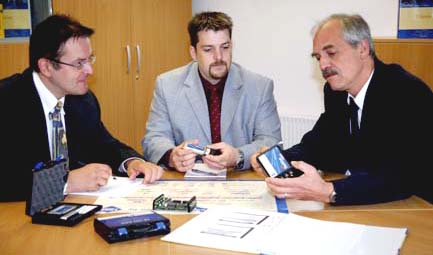
“We are improving the easy usability of our products by comfortable Windows user programs†– Daniel Hotzy, divisional manager, FlexRay department and Automotive at TZ Mikroelektronik.
The increasing need for data speed and safety lead to the formation of the FlexRay consortium, which defined the FlexRay bus in 2000. One of the pioneers of the system is TZ Mikroelekronik (TZM), a German-based company specializing in FlexRay bus systems, development of software, and engineering services. TZM’s clients include original equipment manufacturers and suppliers.
TZM’s early FlexRay evaluation systems have been developed into a wide portfolio of various FlexRay products and services. This hardware platforms such as FlexCard, FlexCard PXI, FlexNode and the Gateway FlexXCon, software utilities like FlexConfig, as well as testing and training services.
TZM products are designed for multifunctional use. TZM’s FlexCard Cyclone II for instance is a flexible and multi-use monitoring and analyzing device for configuration, maintenance testing and monitoring of the time-triggered FlexRay bus system. Another example of TZM’s FlexRay products is its scheduling tool, the software package FlexConfig. All necessary parameters are set via a Windows application. Almost every parameter is checked against general limits or specific constraints so a faulty configuration is almost impossible. TZM’s newest developments are the Gateway FlexXCon and the FlexCard PXI.
The FlexCard PXI has a 32bit-PCI-connection in a PXI-format. Together with the VISA-driver and the easily usable VI-library it is a powerful tool for real-time applications. The Gateway FlexXCon is a compact, automotive platform, which perfectly fits to build gateway functionality.
Automotive Industries spoke to Daniel Hotzy, divisional manager, FlexRay department and Automotive at TZ Mikroelektronik and asked him about the future products TZM is working on.
As most people know, BMW will start with the series production of the X5 by the end of this year, which will include the FlexRay Protocol. For this reason, the most important customers for us are currently BMW and their suppliers Siemens-VDO, Valeo and others. But also other OEM’s such as Audi or DC for instance, which will start with the production of cars with FlexRay in some years, are among our customers. We have often conducted FlexRay training for these customers. Our FlexCard is used by most of the FlexRay users and we are delivering test solutions especially for the suppliers. Finally, nearly all of our customers like our starter kits in order to learn more about FlexRay and to build up their first applications.
Automotive Industries (AI): What are some of the future tools TZM is working on?
Hotzy: We are increasing our product portfolio for the use in test equipment, although our interfaces can be used on different hardware platforms like VME, PXI and desktop computers as well as on different operating systems as e.g. Windows, Linux, LabViewRT and VxWorks. In addition, we are developing a new series of measurement platforms for the in-car use with a very high performance and robustness. And we are improving the easy usability of our products by comfortable Windows user programs, which will give you an intuitive and simple way for using FlexRay.
AI: What are some of the customized hardware, software and IC packaging solutions that TZM offers? And to which customers have you sold these customized products?
Hotzy: On the one hand we have developed special testboards for semiconductor testing and we are performing customer-specific testing for different customers. On the other hand we are developing special FlexRay interfaces and driver software for customer-specific platforms.
AI: What are some of TZM’s plans to expand business in the future?
Hotzy: We are expanding our product portfolio to a complete range of measurement and testing solutions for all demands. Last but not least, we will develop and deliver complete hardware and software solutions for small series productions.











More Stories
Arkema focus on battery technology where “anything is possible”
New Syensqo technology for current and future battery generations
Innovating EV Battery Safety, Max VanRaaphorst discusses Avery Dennison’s advanced adhesive solutions for electrical insulation and corrosion resistance